Australia’s economy ranked 102nd out of 145 countries on the latest Harvard Atlas of Economic Complexity, which measures the diversity and knowledge intensity of a country’s export mix. Australia ranked behind Bangladesh (100) and Senegal (101).
The ranking suggests that Australia has become one of the least self-sufficient and sophisticated economies in the world.
ABC News published the following chart showing the shocking decline in Australian R&D investment relative to GDP:
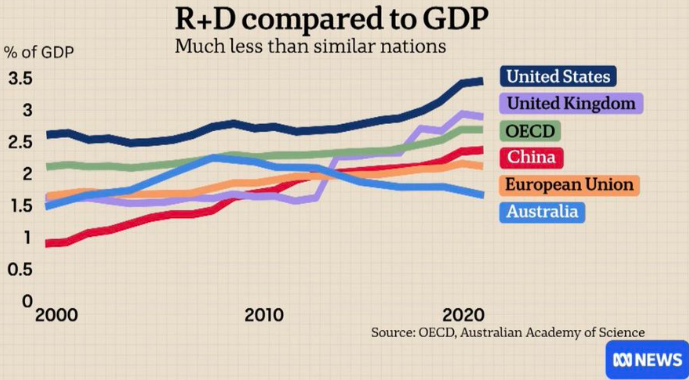
As you can see, Australia’s R&D intensity ranks well behind other advanced nations.
A separate chart from CEDA shows that “Australia has the lowest share of R&D of any OECD country”:
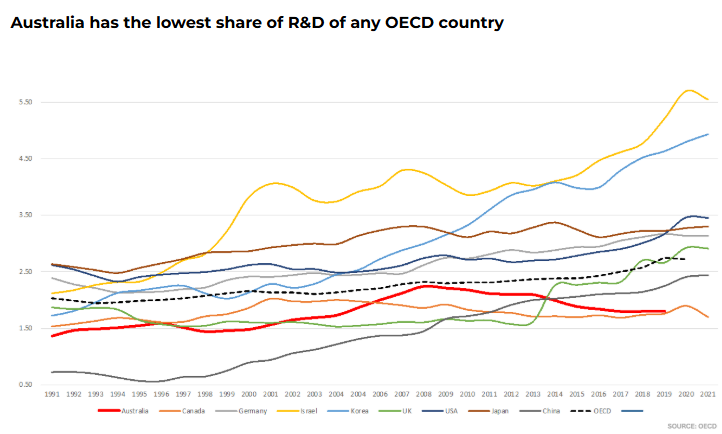
According to CEDA, Australia’s annual R&D spending has also fallen to only 1.68% of GDP, well below the OECD average (3%) and the lowest among developed nations.
Certainly, part of Australia’s R&D decline relates to the structural decline in Australia’s manufacturing sector.
As illustrated below, Australia’s manufacturing sector was the smallest in the developed world relative to GDP over 2017-19:
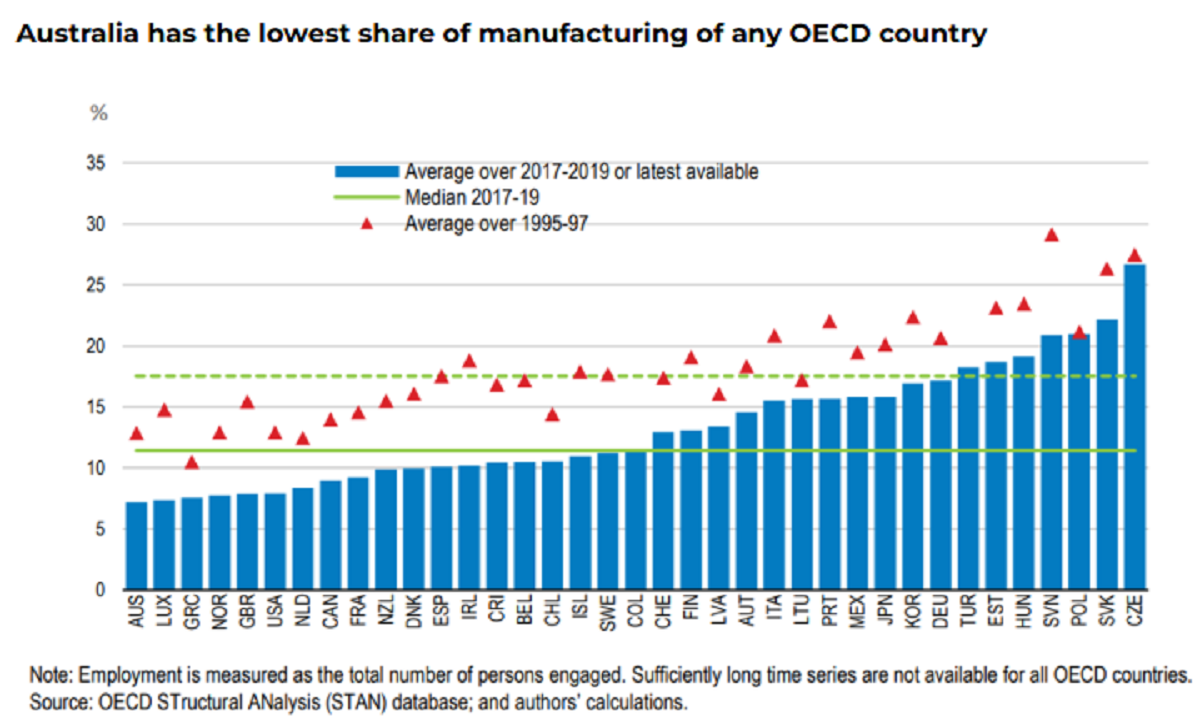
The situation has worsened since, with the manufacturing sector shrinking to a record low 5.1% share of GDP as of Q1 2025:
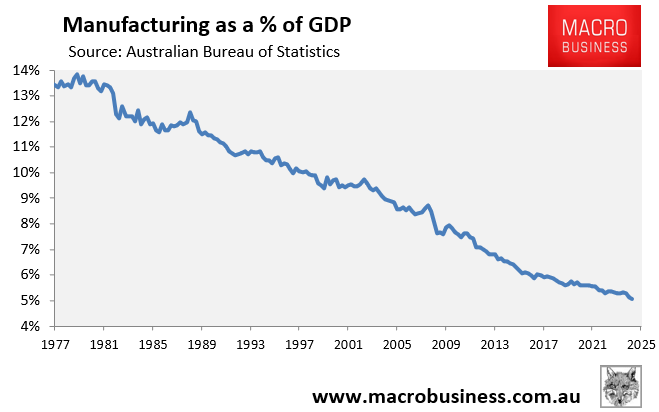
A recent report from leading independent economist Gerard Minack showed how Australia has suffered an abnormally large decline in manufacturing relative to GDP since 1980 and 2000:
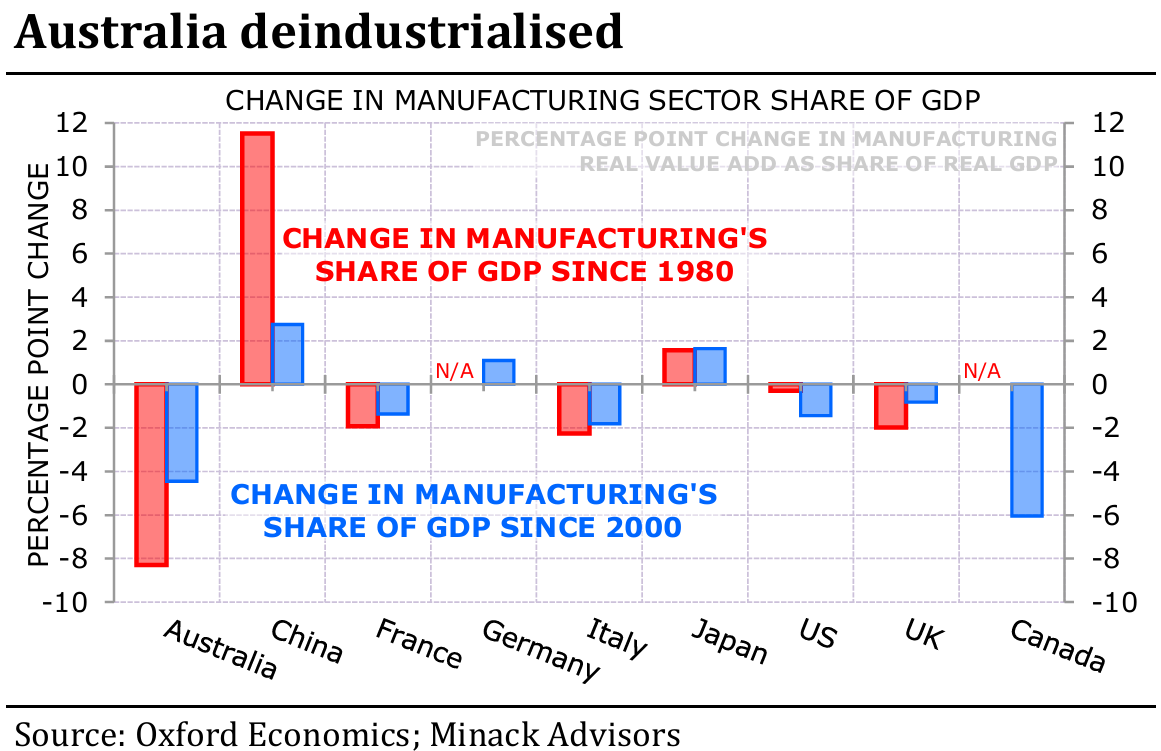
The only other advanced economy to experience a similar collapse in manufacturing output was Canada:
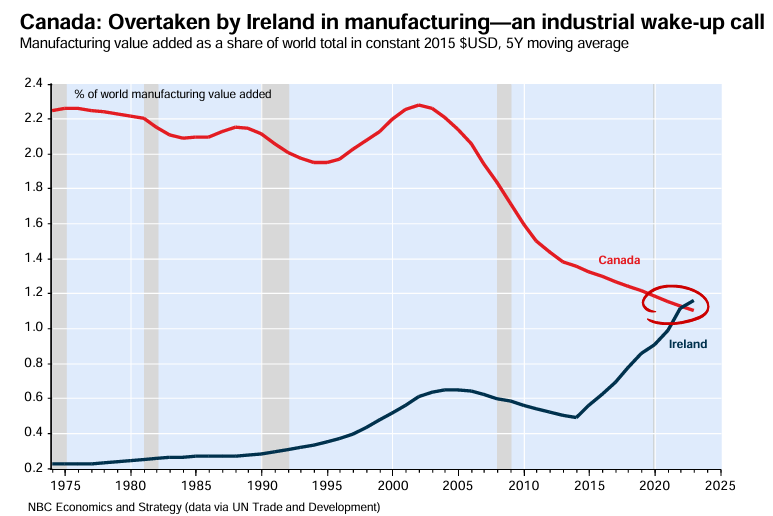
As explained by the National Bank of Canada, “Canada’s factory sector is now smaller than Ireland’s, a country with one-eighth our population”.
Even so, at around 9% of GDP, Canada’s manufacturing sector is significantly larger than Australia’s relative to its economy.
Much like Australia, Canadian private business investment has collapsed.
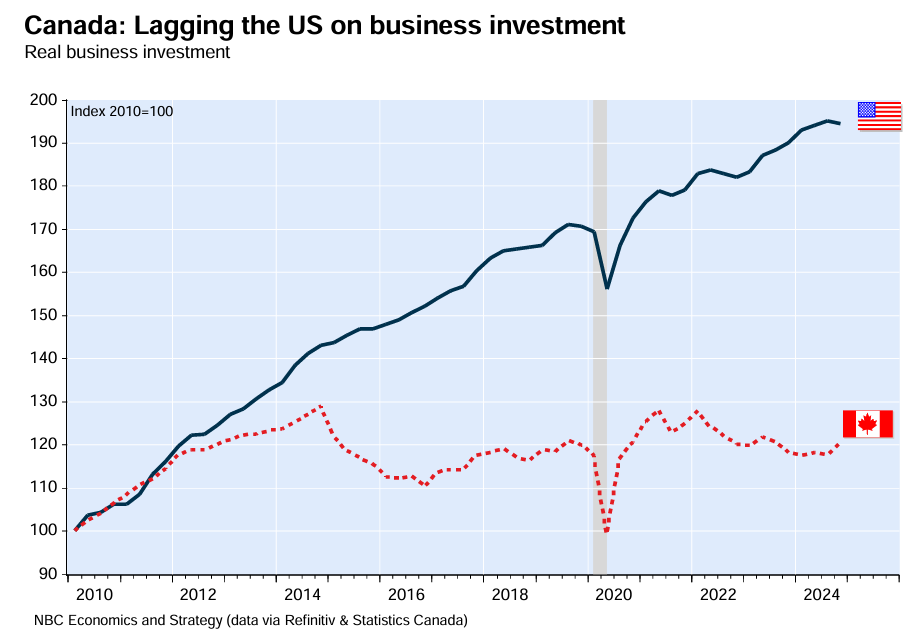
Like Australia, Canada has also run an extreme mass immigration policy and has suffered similar capital shallowing, which has harmed productivity:
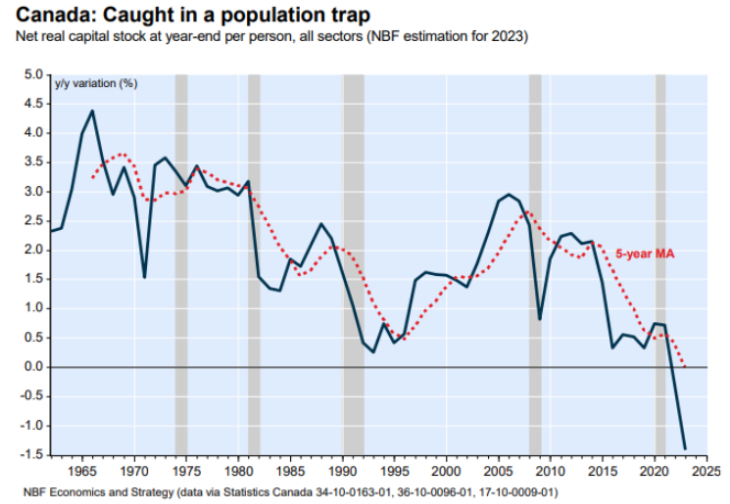
The longer-term outlook for Australia is continued deindustrialisation due to high energy costs.
Despite having one of the world’s largest reserves of gas, coal, and uranium, Australia charges domestic users high prices for gas, is abandoning coal-fired electricity generation, and has banned nuclear power.
As a result, gas and electricity prices will continue to rise, which will drive more manufacturing out of Australia to Asia, where we sell huge volumes of gas and coal.
Australia’s economy will become less diverse and self-sufficient, plunging the nation further down economic complexity rankings.

